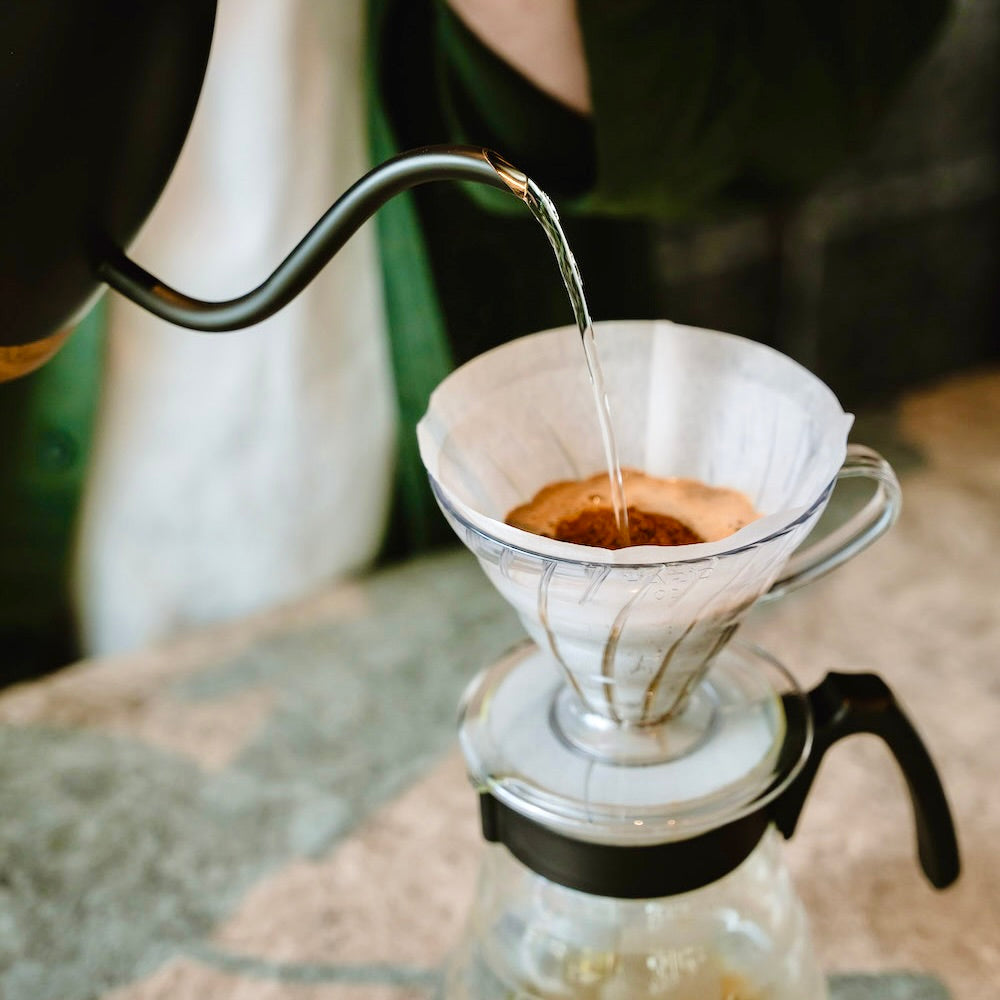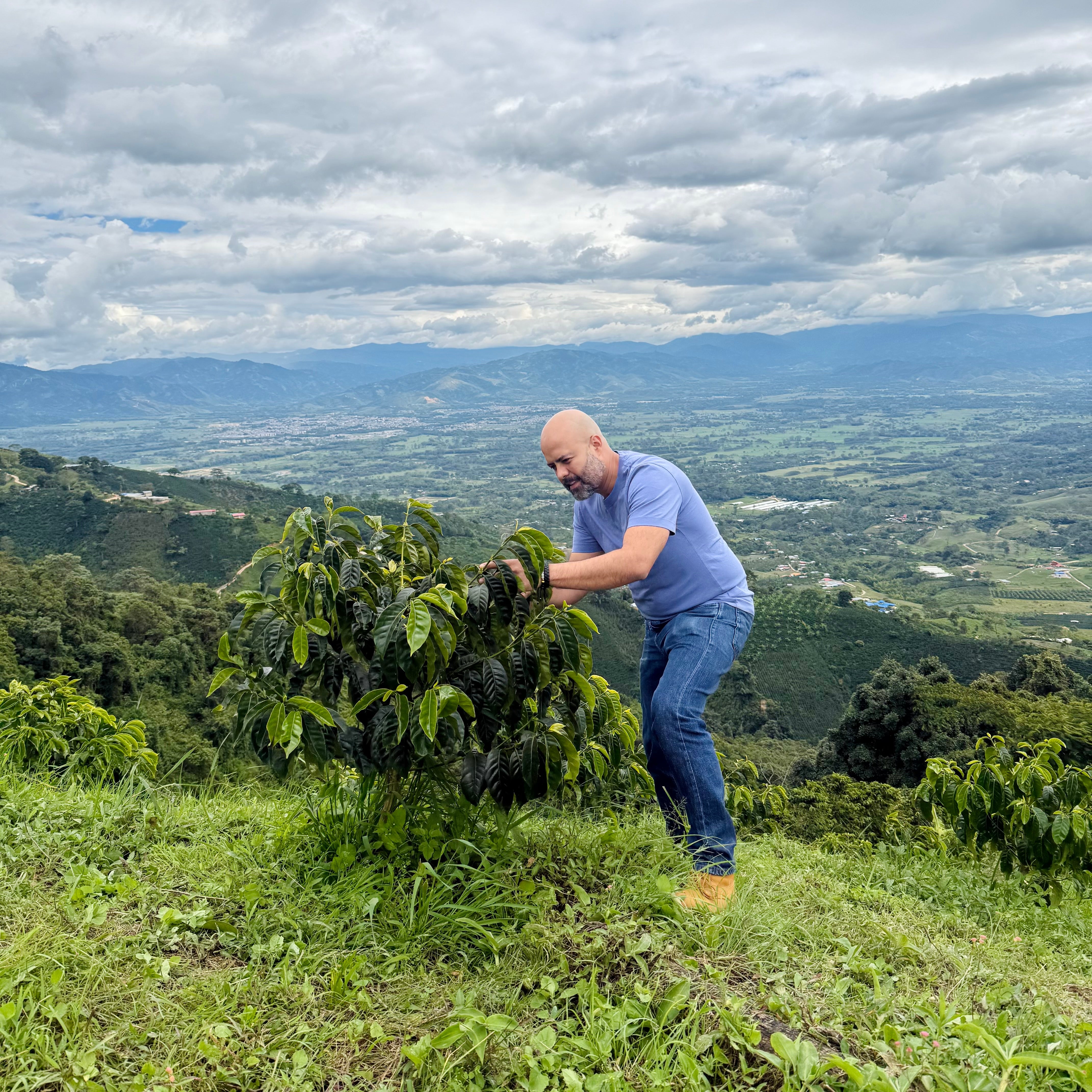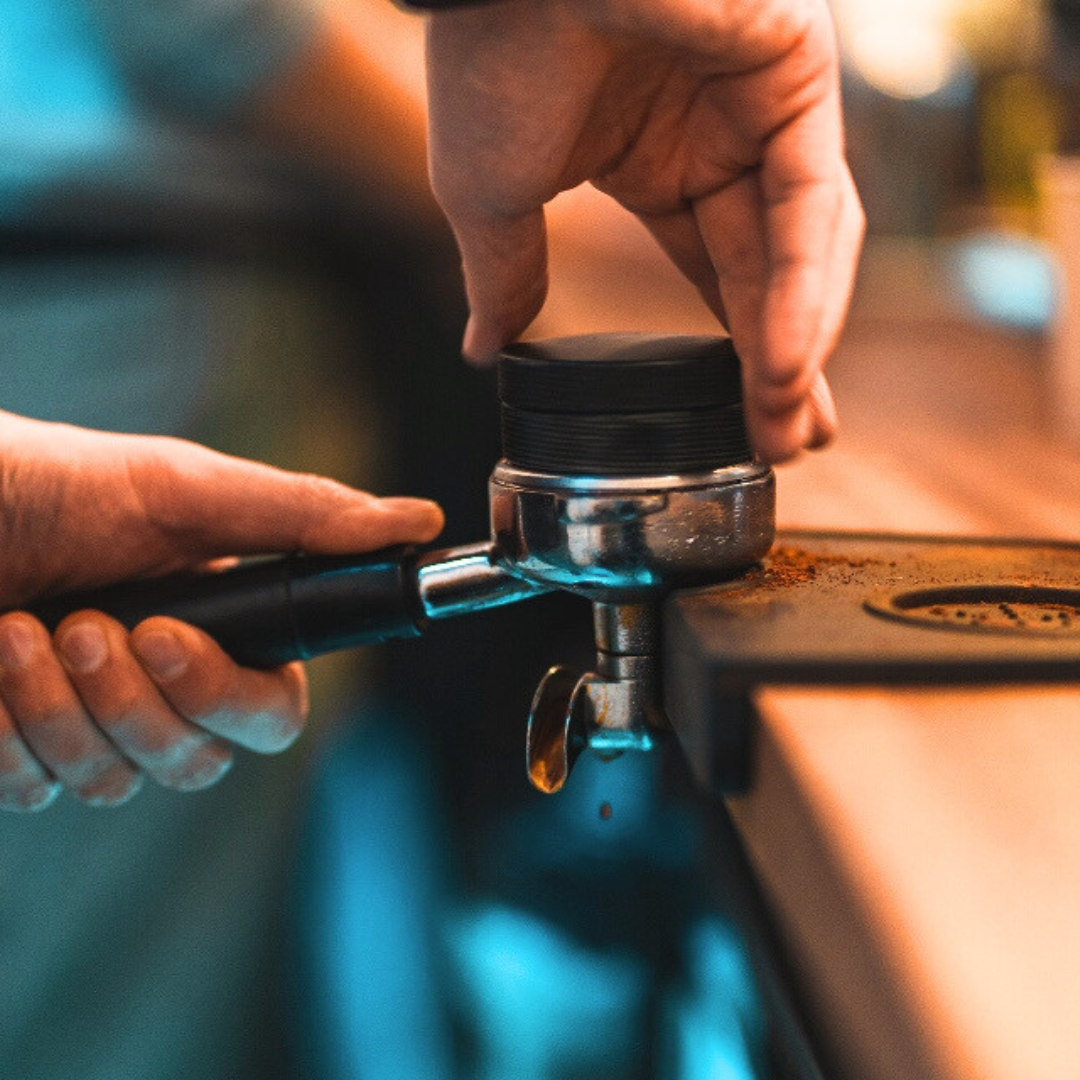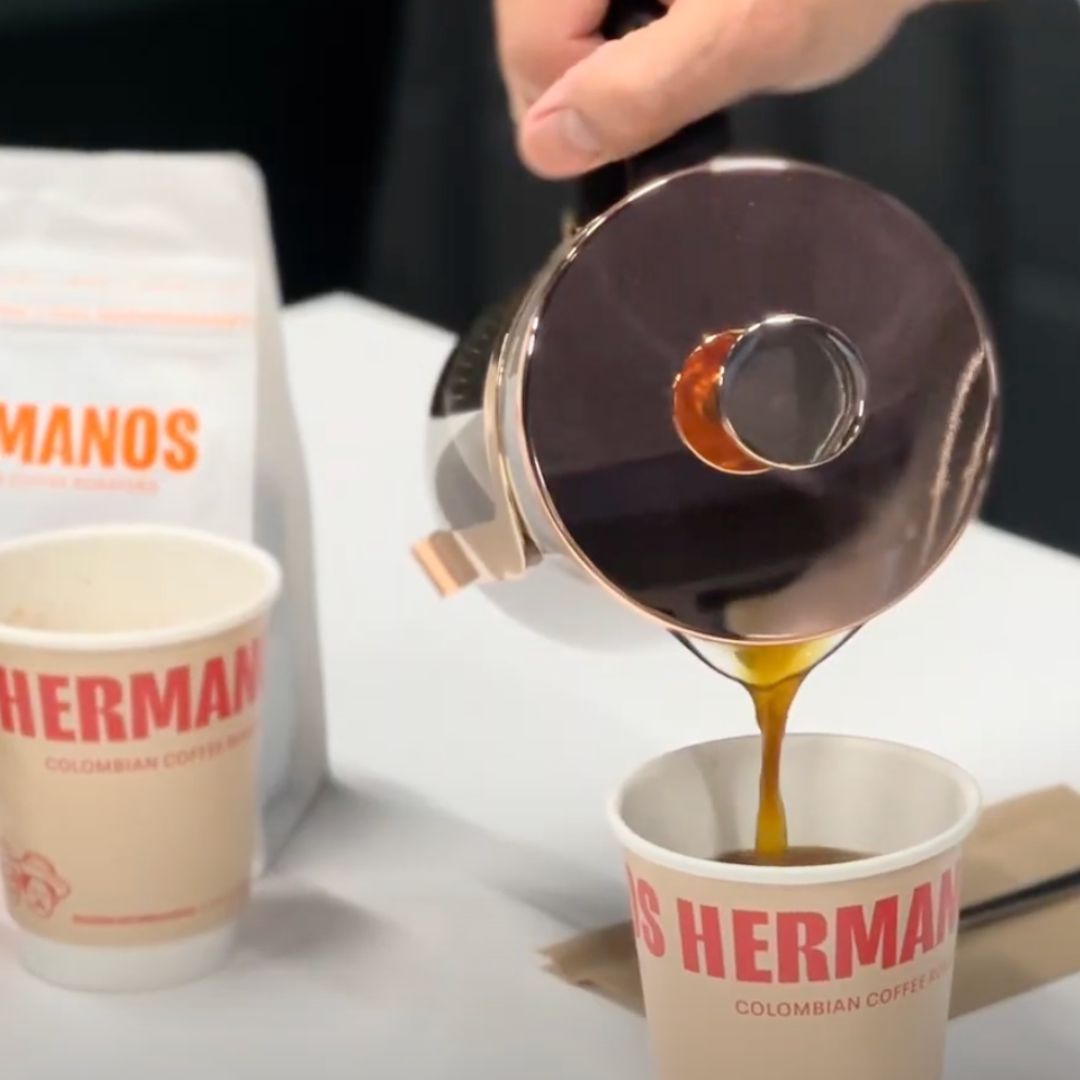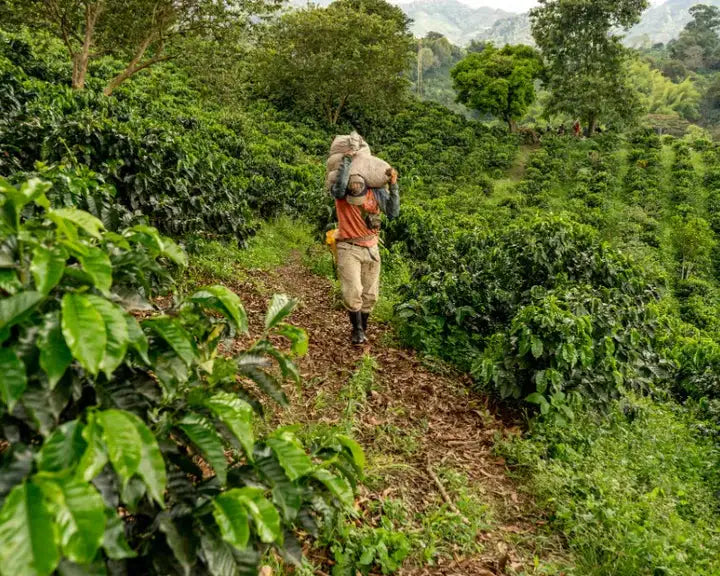Contents
-
Growing Conditions
-
Flavour Profile Of Colombian Coffee Beans
-
The Colombian Coffee Trade
-
How To Buy Colombian Coffee Beans
-
Final Notes
Colombia’s reputation for producing high-quality arabica coffee beans is formidable.
This is partly thanks to the sheer volume the country has exported globally, as well as some incredibly effective branding by the Colombian Coffee Growers Federation (FNC), responsible for establishing the famous Juan Valdez trademark — an iconic symbol of Colombian coffee internationally.
Yet, while these are important aspects of the country’s coffee heritage, they don't convey why Colombian coffee beans are so special.
To understand the true value of coffee produced in this part of the world, you first need to consider the amazing environmental and climate conditions to be found here.
Vast tropical rainforests, stretching coastlines bounded by both the Pacific Ocean and Caribbean sea; impressive mountainous altitudes; moderate cloud coverage and rainfall; high levels of humidity and more all contribute to an incredible aptitude for coffee production.
When you combine this with the fact that most of Colombian coffee is produced by highly committed small-hold farmers, each working within unique micro-climates, you start to get a sense of the country’s amazing tapestry of both high-quality production potential and extremely diverse yields — often managed and cared for in small batches.
So while the country does enjoy an enviable reputation for producing great coffee, the depth and diversity of its offerings, as well as the finer details of why each Colombian coffee crop is so good, are sometimes overlooked.
Growing Conditions
Coffee is a sensitive crop that needs exactly the right conditions to thrive. This is even more important when we’re talking about arabica beans, which command a higher market price compared to other beans like robusta, but are much more sensitive to climate and environmental conditions.
To grow exceptional arabica coffee, you need a few important things that not many countries can offer. This includes a temperate or tropical climate with no frost; plenty of sunlight; and plenty of water. Fertile well-drained soil also helps, as does sufficient canopy for shade.
High altitudes are a crucial component, but more because of the conditions that higher-up locations offer in terms of temperature and rainfall than specific altitude preferences of the coffee tree.
A high-altitude crop will typically offer cooler temperatures that let cherries ripen more slowly, leading to more acidic and aromatic yields.
With these things in mind, Colombia is well placed to do what only a few other nations can, which is take the country’s natural gifts and combine this with the collective efforts of thousands of mostly small-hold farmers who are skilled at nurturing long-term coffee crops for the highest quality yields.
Coffee is a sensitive crop that needs exactly the right conditions to thrive.
Important Factors in Colombian Coffee Production
-
Colombia is famous for its steep altitudes and flourishing rainforests offering both cooler tropical temperatures and plenty of shade
-
The country benefits from several water sources that flow from the Andes into the country’s drainage basins, including large ones in the Cauca, Magdalena, and Nariño Departments
-
The Colombian coffee industry is made up of thousands of small-hold farms that are capable of unleashing the full potential of each crop through careful management and human-led processes
-
Colombia has several coffee growing regions with many different climates that produce a diverse range of flavour profiles
Ever Wondered How Single Origin Coffee Differs to Blends?
Regions
Colombia has over 20 different coffee growing regions. Differences in weather (rain and overall temperature), elevation, soil type and harvest method all contribute to distinct flavour profiles found in each.
|
The North Zone
|
Santander, Norte de Santander, La Guajira, Magdalena, and Cesar.
|
|
The Central Zone
|
South of Antioquia, Boyacá, Caldas, Chocó, Risaralda, Quindío, North of Valle del Cauca, Cundinamarca, and North of Tolima.
|
|
The South Zone
|
Nariño, Cauca, and Huila.
|
|
The Eastern Zone
|
Arauca, Casanare, Meta, and Caquetá.
|
Learn Which Locations Are within the Colombian Coffee Triangle
Cherry Picking the Very Best Coffee Beans

It’s common for Colombian coffee beans to be handpicked, also known as “cherry picked”.
This involves experienced farmers selecting beans that are just the right amount of ripeness, preventing those that are too green or overly ripe from disturbing the overall quality of the batch.
While this isn't unique to Colombia, it’s a factor that helps to protect the existing quality of the beans here. The alternative — strip picking all cherries from a crop at once — is often performed by larger plantations that need to produce much higher volumes of coffee for the global market.
Diversity in Processing Methods
Colombian beans are usually wet-processed (where water is used to separate the pulp from the cherries before drying) or receive a “natural” process (where beans are left to dry in the sun before de-pulping).
The former method can lead to a cleaner product, with no input from the drying method. The latter, where the bean is in contact with the fruit of the coffee cherry throughout the drying process, can lead to the transfer of some of the taste characteristics of the fruit.
Neither method is superior but helps to add another level of diversity to the potential notes you’ll find when drinking Colombian coffee.
Cherry picking allows farmers to identify beans that are just the right amount of ripeness!
Flavour Profile of Colombian Coffee Beans

Due to some of the reasons mentioned, it’s impossible to define a bag of Colombian coffee beans as strictly having certain characteristics. However, when comparing flavour profiles and notes with beans produced in other parts of the world, we can see some important patterns that repeat with Colombian beans.
-
Moderate acidity
-
Sweet, chocolatey flavours
-
Caramel sweetness with a nutty undertone
-
Fruity notes that can touch on apples, fruits and berries
-
Citrus aromas
-
Hints of spice
Colombian Arabica is often described to be well balanced and mild, with a medium body and cleanness.
Explore Our Full Range of Colombian Coffee Beans!
The Colombian Coffee Trade

For many people in Colombia, coffee production is a family tradition. Passed down from generation to generation, the skills and knowledge needed to grow coffee are an integral part of people’s heritage and contributes in no small way to their sense of national identity.
Efforts made by the Coffee Growers Federation (The Federación Nacional de Cafeteros de Colombia) to protect the interests of farmers, understand threats to the sector and extend the collective interests of the industry have also strengthened the coffee trade in Colombia.
Today, this organisation represents the rights of around 540,000 farmers, many of whom operate incredibly small lots and plantations throughout the country’s several coffee regions.
By supporting this model of small-hold farmers vs large consolidated plantations, the largely human-led processes and rituals of coffee protection have been able to thrive for centuries.
So as much as growing conditions favour good coffee production here, the sense of individual pride and accountability for the quality of the beans produced on any one farm (with the average plot at around 5 acres in size) is just as important for producing specialty arabica beans.
Climate Concerns
While circumstances have supported the production of coffee in Colombia for centuries, the entire sector faces the same threats that all global coffee producers do when it comes to climate change.
With its ever-shifting patterns of temperature and rainfall, it has become harder to manage the conditions needed to grow specialty coffee.
With coffee being such a sensitive crop, even the smallest differences in climate can have a cascading effect on production.
With temperatures increasing in lower altitudes, some farmers have already been forced to go higher to elevations to sustain profitable arabica production for the global market.
How to Buy Colombian Coffee Beans

Buying coffee that you’re likely to enjoy, rather than buying coffee just because it’s from a particular place, is always the best approach.
And while the country of origin can sometimes be a good initial indicator of quality, this isn’t enough to know that you’re getting a really good bag of coffee.
Below are a few tips for choosing Colombian coffee beans (or coffee from any coffee producing country for that matter).
-
Buy fresh - As coffee quality declines gradually after it's been roasted, try to buy coffee you know has been freshly roasted within 4-8 weeks of the time you purchase it. Supermarket coffees often don’t have a roast date and will instead have a “best before” date, which can sometimes be 12-24 months after the coffee has actually been roasted.
-
Buy traceable Colombian beans - The country of origin alone is generally far too vague a description of where your beans come from. When possible, buy coffee that comes from a distinct location from within that country. This could be a farm, region, or cooperative.
-
Pay a fair price - Expensive coffee doesn't always mean good coffee, however, producing high-quality arabica beans and then protecting it throughout its quite extensive journey from farm to shop (or cup) does cost money. Paying a little extra for beans grown on smaller farms can be a great way to enjoy specialty beans that have received extra care and attention.
-
Consider medium-to-light roasts - A great way to enjoy the amazing notes on offer from Colombian coffee farms is to look for medium or light roasts. These beans will tend to offer more of the natural qualities of the bean and nuance in both flavour and aroma.
Learn How Different Coffee Roasts Affect the Notes in Your Cup!
Final Notes

The “special” nature of Colombian coffee beans comes from several things working together, from the unique climate and growing conditions here, to the way beans are grown and harvested by farmers. And because of the sheer diversity of flavour profiles across the many coffee producing regions, there's no single way to describe coffee from this country.
What we would say though is that if you do actively choose coffee that comes from single and distinct locations within Colombia, and if you get your hands on beans that have been roasted quite recently before your purchase, you have a very good chance of getting some great quality beans.
Explore the Diversity of Colombian Coffee Today!
















